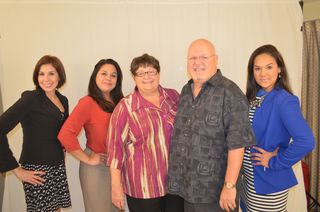Creating a marketing budget is an important piece of your marketing plan. The goal is to create a realistic plan of action to help improve revenue, and determining your spending is an important part of that process.
Without a budget, you can overspend – or fail to spend enough – on your marketing. There are three steps to creating a marketing budget:
- Organize your financial information
- Determine where to spend your marketing dollars
- Set up reports and make adjustments
 Let's dig into each step to spell out what is involved.
Let's dig into each step to spell out what is involved.
STEP #1 – ORGANIZE YOUR FINANCIAL INFORMATION
You have to understand your finances first. You need to know how much money your company makes on a monthly basis and the variations that might exist. This step will take time, but it’s important, because you cannot create a realistic budget based on estimated numbers.
This is why in CCI we push so hard for a monthly goal with the Revenue Focuser tool. Although income can vary significantly throughout the year, you must organize the information based on reliable revenue.
Reliable revenue is the minimum amount of money your company makes each month. For example, if you range from 5k to 7k per month, any amount over 5k cannot and should not be added to the budget because it is not reliable.
Now you need to take that reliable revenue number and subtract your monthly expenses. This is your rent, office supplies, keeping the lights on, payroll, and any other overhead. A realistic budget will focus on income that exceeds the expenses, not the total revenue that comes in. This is your disposable income. When you have determined the amount of disposable income, you will need to decide where that money will go. Marketing is only one area you need to consider, of course. You also need to put some of this money aside for unexpected costs and future growth.
Divide up that disposable income based on the goals of your firm. So, for example, if your immediate goal is to get more prospects in the door, you would put your money into the marketing budget. You will want to put off hiring until your client base is bigger.
If your goal is to hire someone to increase your bandwidth, then put more of your disposable income into growth and set aside less for your marketing budget.
If you don’t have disposable income, your marketing budget is 0. You need to hit the RMS to fill your pipeline, which is a different conversation. Eighty percent of your time needs to be out eyeball to eyeball, developing relationships.
These are the main considerations when you’re deciding what you will consistently be putting toward your marketing, so this is what you’ll need to nail down.
STEP #2 – DETERMINE WHERE YOU WANT TO SPEND MARKETING FUNDS
After you know the amount available to spend on marketing, the next part of creating a solid budget is to organize how you’ll be spending that money. Three main factors contribute to how to spend marketing funds: (1) the size of your budget; (2) your past experience; and (3) where you can reach your target market.
Let’s start with (1), the size of the budget. If you have a small budget, you’ll want to start with small print ads, online ads, social media and email advertising to bring in new clients. A larger budget would include radio or television ads to hit a wider range. So be responsible with the size of your budget.
Then (2), past experience – what has or hasn’t worked for you in the past? If you noticed that promoting your workshop with newsletter and small print ads brings in leads, then do it again and again. Keep that in your budget. Even if you have the means for more expensive alternatives, continue to commit to the things that work.
Finally (3), decide where you can reach your target market. Start this process by writing down a description of who your target market is. For most of us, it’s the baby boomers and sandwich generation. And think about which media they use. For baby boomers, it’s more than likely a locally circulated paper. But for the sandwich generation, what websites do they frequent, and how can you be relevant on the social media they use? Write down where they are and this is where you should be advertising.
If you are testing something new – a good rule of thumb is to start with a smaller budget and test the waters before making a larger financial commitment. After you determine if it will work, you can add more funds into that new marketing channel or opportunity.
STEP #3 – REVIEW YOUR TRACKING AND REPORTING! WEEKLY! AND ADJUST!
The final step is to analyze the data. Look at what’s working and what’s not working. From there you should make adjustments to improve revenue. Anything with marketing needs to be tied to generating revenue. If it doesn’t generate revenue, remove it altogether and try something new.
Knowing this information, and looking at your reporting weekly during your marketing meeting, is the most important part of maintaining your marketing budget and plan.
You must looking at past performance and know with certainty whether revenue has increased, decreased or stayed the same. You should be able to tie each of your marketing dollars and efforts to what you’re tracking and reporting. Make adjustments for things along the way. Increase your budget on the things that are working. Pull the plug on the things that are not working.
Having a marketing budget is not enough. You have to be able to take action based on your reporting.
Your budget helps you avoid overspending on your marketing and holds you accountable for taking advantage of opportunities and cutting off the things that aren’t working so you can put the money someplace else. That helps you find the best solutions to meet your business goals.
If you want to learn more about Lawyers With Purpose join us February 3rd – 5th in Charlotte, NC, for our Practice With Purpose Program. You don't want to miss this event about Asset Protection, Medicaid & so much more to build your estate and elder law practice.
Roslyn Drotar – Coaching, Consulting & Implementation – Lawyers With Purpose









